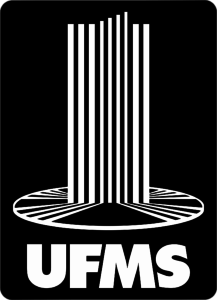Use este identificador para citar ou linkar para este item:
https://repositorio.ufms.br/handle/123456789/12239| Tipo: | Trabalho de Conclusão de Curso |
| Título: | Nectários florais de Triplaris americana L. e Triplaris gardneriana Wedd. (Polygonaceae) |
| Autor(es): | JÚLIA DAS MERCÊS TOTINO |
| Primeiro orientador: | ROSANI DO CARMO DE OLIVEIRA ARRUDA |
| Resumo: | O estudo investiga a morfologia anatomia floral de Triplaris americana e Triplaris gardneriana para verificar a presença de nectários. |
| Abstract: | Nectaries are secretory structures specialized in nectar production, functioning primarily to attract pollinators. They are widely described across angiosperm families and exhibit great morphological diversity, having evolved independently in several lineages. In the family Polygonaceae, floral nectaries have been recorded, but detailed data on their morphology are scarce. Triplaris is one such genera with records of floral nectaries, yet with no anatomical or morphological descriptions to date. This study aimed to describe the anatomy and localization of floral nectaries in Triplaris americana and Triplaris gardneriana. Flowers were processed for light microscopy (LM) and scanning electron microscopy (SEM). For LM, flowers at anthesis and pre-anthesis were fixed in FAA (formalin-acetic acid-alcohol), dehydrated, embedded in resin, sectioned with a rotary microtome, stained with toluidine blue, and mounted in water for documentation. For SEM, samples were dehydrated in an ethanol series, processed using a critical point dryer, gold-coated, and observed under SEM. Both T. americana and T. gardneriana possess floral nectaries in staminate and pistillate flowers. In both species and morphs, the nectary is receptacular and intrastaminal. In staminate flowers, it is located inside the floral tube and on the receptacle; in pistillate flowers, it surrounds the ovary and lies between the staminodes. Nectaries in both morphs exhibit an epidermis with constantly open stomata. Other epidermal cells contain phenolic compounds and have a thick cuticle. The nectariferous parenchyma consists of small cells with dense cytoplasm, phenolic idioblasts, and druses. The results confirm the presence of nectariferous tissue in both species, indicating potential nectar production and pollinator attraction. Further studies are needed to understand the dynamics of nectar secretion in these species. |
| Palavras-chave: | Anatomia floral Ambofilia Caryophyllales Dioicia |
| País: | |
| Editor: | Fundação Universidade Federal de Mato Grosso do Sul |
| Sigla da Instituição: | UFMS |
| Tipo de acesso: | Acesso Restrito |
| URI: | https://repositorio.ufms.br/handle/123456789/12239 |
| Data do documento: | 2025 |
| Aparece nas coleções: | Ciências Biológicas - Bacharelado (INBIO) |
Arquivos associados a este item:
Não existem arquivos associados a este item.
Os itens no repositório estão protegidos por copyright, com todos os direitos reservados, salvo quando é indicado o contrário.

